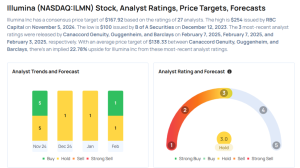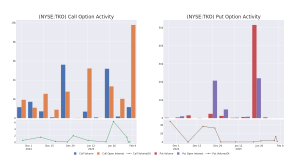Bitcoin made history at the end of January when it surpassed $100,000 for the first time. That didn’t last long but was driven in large part by the limit on the number of bitcoins that can be mined. That scarcity drives demand and has been part of what’s behind Bitcoin’s rallies of late. But it isn’t the only thing that moves the price of Bitcoin. The legal, social and economic aspects all play different roles in the price movements.
Bitcoin operates on a proof-of-work blockchain. Miners use powerful computers to solve complex puzzles. This process validates transactions and secures the network. In the U.S., these mining activities are treated like traditional commodities, similar to farming or mining for precious metals. This legal framework supports the legitimacy and durability of Bitcoin.
Social dynamics add another exciting layer. Anybody can mine Bitcoin if they are willing to invest the necessary resources. This open competition builds trust in the system. It makes Bitcoin less vulnerable to fraud and manipulation. Participants find comfort in a network where fairness is built into the process.
The link between proof-of-work and the real economy is also strong. Miners invest in expensive equipment and spend hours solving puzzles. Their costs set a natural floor for Bitcoin’s price. This connection grounds digital assets in real-world economic principles.
A Different View On Proof Of Work
However, not everyone is sold on proof-of-work. Critics point to Bitcoin’s halving events, which occur every four years. At these events, mining rewards are cut in half. This produces scarcity eventually causing the price to rise.
While Bitcoin’s foundation has stood the test of time, crypto innovators are taking its core ideas to a whole new level. Meet Seasonal Tokens – a bold twist on Bitcoin’s proof-of-work legacy that’s looking to shake up the market. They not only honor Bitcoin’s established strengths but also address some of its challenges.
Seasonal Tokens are four ERC-20 tokens mined on the Ethereum network. Their mining supply halvings are staggered every nine months, causing the token produced at the fastest rate – referred to as “in season” – to become the slowest. This staggered supply schedule creates predictable price oscillations that investors can use to increase their total number of tokens, independent of broader market conditions.
This innovative design aims to solve a common problem in traditional proof-of-work systems. When Bitcoin’s rewards are halved, miners often face a sudden drop in profitability, potentially forcing some to leave the market. With Seasonal Tokens, when one token experiences a reduction in rewards, miners can simply switch their focus to another token that is “in season.” This rotating incentive structure fosters an implicit collaboration between miners and investors, reducing risk for both parties.
Predictable Price Fluctuations
Data collected over more than three years shows that these carefully orchestrated shifts in mining supply result in predictable price swings for Seasonal Tokens. By isolating the effects of supply changes from broader market forces, investors and analysts can better understand how classic economic principles apply in the digital realm.
This seamless integration of Bitcoin’s foundational ideas with the inventive approach of Seasonal Tokens highlights a broader truth: even in a rapidly evolving crypto market, timeless economic principles continue to drive innovation. Proof-of-work isn’t just about securing a blockchain; it’s the engine that connects digital assets to real-world economics, paving the way for new developments and exciting possibilities.
As this proof-of-work revolution unfolds, both Bitcoin and Seasonal Tokens seem to be setting the stage for a dynamic future in the crypto landscape. To dive deeper into how Seasonal Tokens are redefining digital asset economics and furthering the legacy of Bitcoin’s innovative model, click here.
Featured photo by Kanchanara on Unsplash.
This post contains sponsored content. This content is for informational purposes only and is not intended to be investing advice.
Market News and Data brought to you by Benzinga APIs
© 2025 Benzinga.com. Benzinga does not provide investment advice. All rights reserved.



